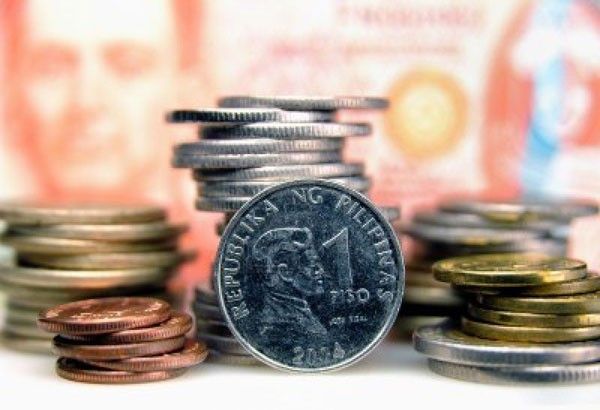The weakening or depreciating peso


On Sept. 20, 2010, it took P44.25 to buy one US dollar. On July 1, 2016, when President Duterte was sworn into office, the exchange rate was P47.00 to $1.
On Jan. 3, this year, the rate was P49.96. By March 9, it was down to P52.02 to $1.
It is taking more pesos to exchange for one US dollar. This weakening or depreciation of the peso is a phenomenon that is not easily understood. (For one thing, not only do we have a changing peso value to the US dollar. The US dollar itself is changing its own value as a currency!)
The time horizon. The time in which we view such changing values of the peso is important for different reasons in assessing our nation’s economic development:
We could view it “long term” (over the years, for instance, since 2010, or since independence in 1946). On that basis we could attempt to explain in part why our economic development has taken on the particular direction it has traveled.
We could look at it over “the medium-or short- term,” for instance, since the Duterte presidency). In this context, we can examine the interaction of the economic developments and programs that the Duterte government is pursuing and how the changing peso could alter the future directions of the economy.
For most Filipinos who live in the moment, however, the immediate term, on a day-to-day basis, is what matters. A changing peso affects the pocketbook and the household’s expenditure patterns.
Such differences in perspectives makes the discussion of the peso exchange rate not easily the stuff in which common sense agreements can be easily made.
The peso exchange rate as a policy tool. A weakening peso is not necessarily bad. It is simply the price of currency, telling us how much foreign goods cost in terms of our peso.
In fact, a weakening peso might be a useful tool to help correct prices. As consequence, the pattern of incentives, that appear “out of kilter” in the real economy could find a way by which they go back in some balance.
Government policy-makers have noted that the weakening Philippine peso is part of a conscious effort to recalibrate economic policy directions. Try to read into the following statement coming from the Department of Finance:
“In an environment where macroeconomic fundamentals are sound, it is best that the exchange rate should move flexibly so that economic players are able to adjust promptly to market dynamics, thus sustaining economic growth.”
In short, the exchange rate could help in providing a proper balance in pricing productive economic factors and realigning domestic economic incentives.
The benefits from a weakening peso. Exporters welcome the depreciation since they receive more pesos for their foreign dollars earnings. A weakening peso means more pesos exchanged for each dollar earned.
Those who sell services to foreigners and live in the country – such as those in the tourism services industry, in the business process outsourcing (BPO) industries serving as call centers and service providers for back-office operations also directly benefit because of the dollar revenues that they earn in exchange.
People who depend on remittances from abroad (like OFW remittances) for their needs likewise receive more pesos for every dollar they receive.
A weakening currency becomes an incentive for exporters to want to expand their operations. In due time, if such expansion of new industries include the attraction of more foreign capital in the country, it could reverse the outflow of workers so that they look for jobs at home.
In due time, a weak peso helps to strengthen the country’s ability to pay for imports and to strengthen the country’s overall balance of payments position.
This might appear to be a contradiction, but that is how it works out. This is why countries with weak currencies before have been able to recover their economic health and strengthen their economic position relative to other countries.
(Think of the East Asian model of growth, from Japan to China, to the many high growth countries of Southeast Asia that have overtaken us in economic development in the past seven decades. [The Philippines has been a very latecomer in this group!])
Where the weakening peso hurts. There are sectors that could get hurt when a currency weakens: (a) people whose incomes are relatively fixed or unchanging; (b) industries and businesses that are dependent mainly on high import content; and (c) debtors who have obligations in dollars.
All these economic agents (or sectors) need to use more pesos to acquire each dollar of foreign exchange they need that is expressed in terms of imports. The weaker peso means that they have to pay more pesos to acquire the essential dollars to meet old needs.
The mechanism by which this happens is through price inflation. Imported goods become more expensive in the stores. Price increases hurt the consumer’s budget. In the end, they translate in terms of demands for wage increases and for price relief from those immediately affected.
The recent increase in prices have also been partly influenced by the effectivity of the taxes contained in TRAIN package 1. The increase in taxes on energy products and of additional taxes on vehicles have complicated the impact of inflationary pressures arising from the depreciating peso.
The problem of inflation is also related to the question of rice imports. Food prices are a major component of the price impact of inflation. The government’s efforts to improve food production at home has to be kept in good coordination with the liberalization of rice imports – an important topic of recent policy relevance to the problem at hand. (This topic, of course, deserves its own elaboration.)
The logic of this development direction is to open the economy more toward foreign direct investments, even as the country provides opportunities for domestic investors to develop new and productive enterprises.
Focus on such opportunities implies that measures that the government encourages are designed to encourage new employment opportunities in industry and agriculture.
My email is: [email protected]. Visit this site for more information, feedback and commentary: http://econ.upd.edu.ph/gpsicat/
- Latest
- Trending



























